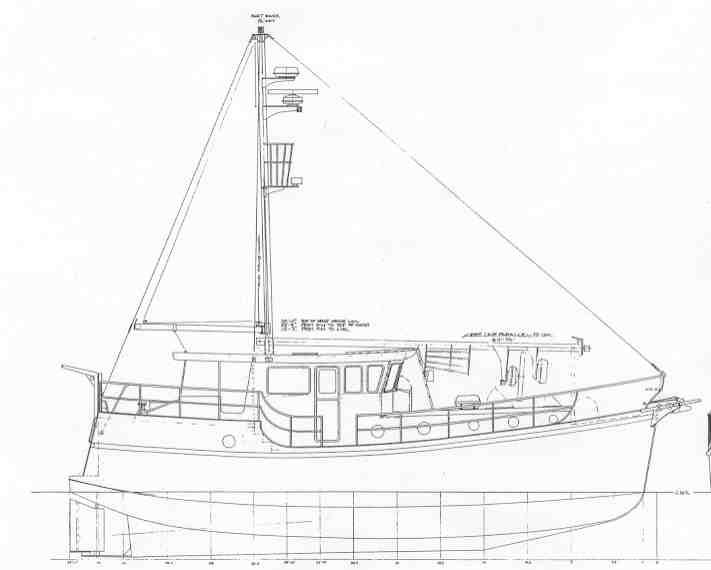Les Schnick is a fine designer and draftsman (imagine, he actually does HAND DRAFTING still!! But of course his German name says it all…) who works with Townsend Bay Marine, among others. Les worked over the 45-PLUS and the owner, as well as I, liked his version. Here it is. This again shows that when you can keep egos out of things, a combination of ideas will frequently make a better product! My only objection to this version is the sailplan; the main is way to small. The reason is Les put a standing backstay on it which limits the boom length. Actually, she doesn’t need the standing backstay at all. The side stays can be a bit aft and I’d have a running back on each side too. I’d remove the backstay, raise the mast, and move it forward maybe 12″. If you visit Holland you’ll see HUGE gaff rigged boats with tabernacle masts, all using running backs, many sailed regularly by one or two guys.


Townsend Bay in Pt. Townsend, WA, did a fine job of building her. The two welders, Paul and Stan, are excellent craftsmen and the tremendous heavy duty machinery available to them makes the job smoother yet. This new digital camera I’m using doesn’t take the best pictures (could it be me?) but here, after the below info, are some construction shots up to 8/23/05.
DIMENSIONS LWL: ….. 46.12 ft Bmax: …… 14.23 ft BWL: ……. 13.80 ft Draft at DWL: 5.30 ft Volume : …. 1073.04 ft3 Displ. at DWL: .. 68674.27 lb Prismatic: … 0.657 Block: …….. 0.318 Midships: … 0.484 Waterplane: 0.789 L/B Ratio 3.34 D/L ratio 312 Lbs./In. 2679 LCB 24.51 ft (50.7% aft) LCF 25.60 ft (53.1% aft) VCB -1.34 ft XWS 25.73 ft (53.4% aft) ZWS -2.31 ft |
 |
I’ve heard arguments from upside downers and right side uppers about which way is better. I dunno and suspect it doesn’t matter. Top builders can be found who work either way…. |
 |
 |
 |
The fwd. underwater plate is 3/8″ thick. Look how neatly Paul and Stan rolled it into position. |
